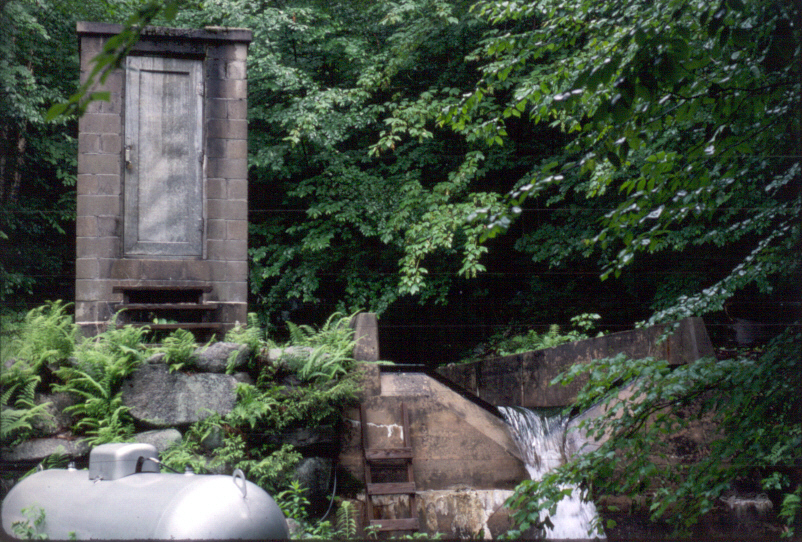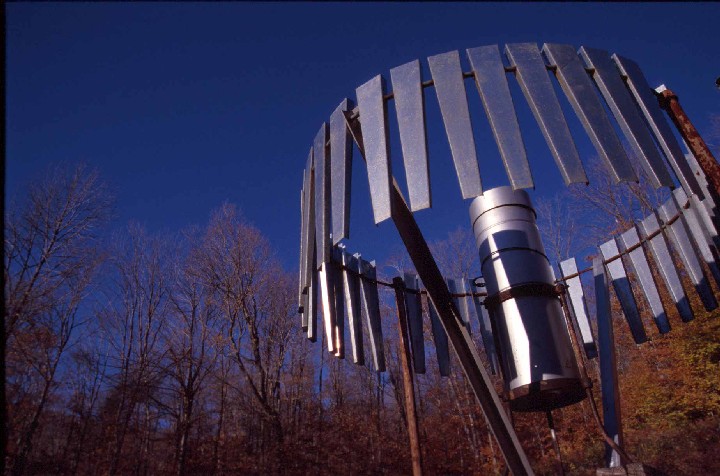
Credit: Hubbard Brook LTER
by Jenna Zukswert, graduate student at SUNY ESF and the Hubbard Brook LTER
The Problem with Print
For decades, researchers at the Hubbard Brook Experimental Forest could safely assume that evapotranspiration amounted to about 500 mm of water per year. Starting in 2005, however, “things started to change,” says Dr. Mark Green, a forest ecohydrologist based at Case Western Reserve University in Ohio. By about 2010, all the watersheds at Hubbard Brook saw a marked increase in evapotranspiration, and mean evapotranspiration values are now about 650 mm per year, representing a 30% increase from older values. “There are some fascinating things happening with evapotranspiration lately,” Green says of this sudden change in the trend.
Efforts to summarize long-term trends in ecological data at Hubbard Brook through print publications have helped scientists understand long-term changes in forest ecology—but can quickly become outdated. As climate change progresses and ecosystems undergo frequent shifts, the ability to update observed trends with new data is even more critical. The increase in evapotranspiration values Green noticed serves as an example.
Green and his colleagues published their hypotheses for this increase in evapotranspiration, suggesting that it was partly due to warming air temperatures, but also due to plants transpiring more. “An increase in evaporation rates with increasing air temperature is consistent with what we’ve been predicting in the eco-hydrology community for a long time,” said Green, “We had expected to see it at Hubbard Brook for a long time, and did not, which was a puzzle. And then all of sudden, it responded in a threshold manner.…And then the next question was, ‘Why? Why did this happen?” These hypotheses were published in 2021 in Hydrological Processes. But they also found a second home for their results, one which allows for the information to be dynamically updated far into the future: the new Hubbard Brook Online Book.
Figure 2 from the Hydrology section of the Online Book. Long-term water balance in four watershed at Hubbard Brook: A. WS3, B. WS6, C. WS7, D. WS8. Originally published in Campbell et al. 2011; this figure is updated with current data available in the Environmental Data Initiative Repository (EDI; https://portal.edirepository.org). Hover over graph to access interactive controls available at the top right (zoom/pan/etc). Used with permission from the Hubbard Brook LTER.
A Long-Term Living Document
The Online Book at Hubbard Brook solves the problem of print publications going out of date by providing a living document that authors continually update as new data come in and interpretations change. This effort was led by Dr. Timothy (Tim) Fahey of Cornell University when he and Dr. Charles (Charley) Driscoll of Syracuse University were co-principal investigators of the Hubbard Brook LTER grant. When they were encouraged to produce a synthesis volume for the Hubbard Brook LTER site summarizing decades of research, Fahey and Driscoll noted that the most recent syntheses from Hubbard Brook were books that had been published in the 1970s, and it was “unfortunate” that they were now out of date. “Charley and I thought it would be a good idea to write a synthesis,” said Fahey. “But to do it online so that it would be a living document.” From there, the Online Book project began.

Credit: HBR LTER, used with permission
Fahey took the lead and remains the book’s primary coordinator and an author of more than half of the chapters. Fahey has since solicited the cooperation of 12 other scientists who co-write and edit chapters of the book corresponding with their expertise in forest ecosystem ecology; topics range from forest composition to hydrology, from soil animals to remote sensing. Authors submit their writing and editing to Fahey and Dr. Mary Martin, the data manager for Hubbard Brook, who then upload the final content. To incentivize authors to contribute, Fahey aims to make the process enjoyable and rewarding. For example, Fahey gives the authors a lot of freedom to write in their own voice.
“It’s really fun to write these chapters, for a couple of reasons,” said Fahey. “You might get some review, you might get some comments back from people who are looking at it, but you can put in your own slant on things.” In this way, consistency across chapters is deliberately not the goal. What remains is as much a compilation of the research at Hubbard Brook as it is a compiled subset of the diverse voices and perspectives that make up the Hubbard Brook community.
Unlike scientific papers written for fellow scientists and “coffee table books” written for the general public, the Hubbard Brook Online Book fits somewhere in the middle. It now serves as the guiding document for any new researchers, students, or technicians who intend to start working at Hubbard Brook. The Online Book has also been used as a textbook at least once. In a recent seminar course at Cornell University, Fahey assigned one chapter per week to a course of upper-level undergraduates and graduate students and ran a discussion-based course that covered many aspects of ecosystem ecology.

Credit: HBR LTER, used with permission
Integrating the Environmental Data Initiative
One innovation of the Online Book is its integration with the Environmental Data Initiative (EDI), where datasets from Hubbard Brook and all other LTER sites are stored. Dr. Mary Martin is behind the effort to link EDI datasets with the figures in the book. A four-panel figure in the Hydrology chapter is one example of how Martin can use data stored in EDI to create a figure in the programming language R for the Online Book. As datasets are updated in EDI, the R code can be used to easily remake the graph in the Online Book, which ensures that the figure present in the Online Book is always consistent with the latest dataset. Each panel in this figure represents a hydrologic reference watershed at Hubbard Brook Experimental Forest, and each panel displays three datasets: annual precipitation (in gray), annual streamflow (in blue), and annual evapotranspiration (in green). Hovering a cursor over each data point reveals its exact value. Because the figure is connected to the dataset through the R code, the figures continually stay up to date, and with corresponding edits made to the text by authors when figures are updated, the Online Book will avoid the same fate of becoming outdated that its printed predecessors have faced.
This integration provides one, central location where anyone can go to find the latest version of graphs for key long-term datasets, so they can see the latest trends and use these figures in presentations, without needing to recalculate values derived from the raw data. As Fahey says, “Having a link to EDI is going to make it so much easier because the data points will appear [when the dataset is updated], and it doesn’t require somebody to start making a whole bunch of calculations separate from what was done in the past.”
Next Steps
As intended, the Online Book is subject to change as time goes on. Authors will continue to provide updates to the text as long-term monitoring continues, at times challenging the trends seen at Hubbard Brook to date. New chapters may be added as well. Martin has identified more figures for which integration with EDI is possible, which will make more of the figures interactive and current. Fahey would also like to include short videos in each chapter from authors, saying “These will serve as an introduction to the authors, provide a look at the field setting of the research, and provide useful information to elaborate on the scientific approaches we use.”
What they produce is a book that is never truly finished yet always up to date, a “movie” as opposed to the “snapshots” of Hubbard Brook that the print volumes of the past represent.
“I think it’s a novel idea”, Green says, “and I think it’s going to continue to develop as our science develops.” As ecological trends change with a changing climate, the Online Book will continue to reflect the most current understanding of the Hubbard Brook forest ecosystem whenever it is read.










